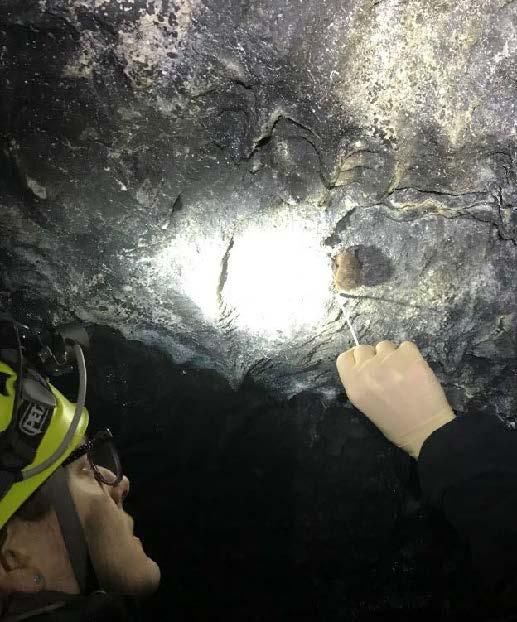ARCHIVED NEWS RELEASE
This document is provided for archival purposes only. Archived documents
do not reflect current WDFW regulations or policy and may contain factual
inaccuracies.
News release June 21, 2023
Contact: Abby Tobin, Abigail.Tobin@dfw.wa.gov
Media: Jennifer Becar, 564-669-0850
OLYMPIA – White-nose syndrome, an often-fatal disease of hibernating bats, continues to spread in Washington.
Scientists with the Washington Department of Fish and Wildlife (WDFW) worked with the U.S. Department of Energy and a bat rehabilitator on recent surveys that resulted in new detections of white-nose syndrome and the fungus that causes it.
“The fungus that causes white-nose syndrome has been detected in Benton County for the first time,” said Abby Tobin, bat species lead for WDFW. “We also found a bat infected with white-nose syndrome in Jefferson County this year, which is a first.
“It’s discouraging to see the disease spreading among local bat populations, but WDFW and our partners will continue our proactive measures to survey for and respond to white-nose syndrome in Washington and test the efficacy of emerging disease treatments,” said Tobin.
White-nose syndrome is caused by the fungus Pseudogymnoascus destructans, which attacks the skin of hibernating bats and damages their delicate wings, making it difficult for them to fly. Infected bats often leave hibernation too early, which causes them to deplete their fat reserves and become dehydrated or starve to death. White-nose syndrome has caused vulnerable bat populations to decline in many parts of North America. While the syndrome is often fatal to bats, it does not affect humans, livestock, or other wildlife.
The first case of white-nose syndrome in the western U.S. was confirmed in King County in 2016. Since then, WDFW has confirmed over 150 cases of the disease in at least four bat species in the state.
Including these most recent findings, WDFW has confirmed white-nose syndrome in King, Chelan, Kittitas, Pierce, Snohomish, and Jefferson counties. The fungus that causes white-nose syndrome has now been detected in Lewis, Mason, Yakima, and Benton counties. A map showing fungus and white-nose syndrome detections in Washington is available on WDFW's white-nose syndrome webpage.
WDFW urges people to not handle wild animals, especially if they appear sick or are found dead. If you find sick or dead bats or notice bats acting strangely, please report your sighting on WDFW's white-nose syndrome webpage or call 360-902-2515. Bats flying outside during the day in winter is an example of noteworthy behavior.
Even though the fungus is primarily spread from contact between bats, humans can unintentionally spread it as well. People can carry fungal spores on clothing, shoes, or recreation equipment that touches the fungus. To learn more and to get the most up-to-date decontamination protocols and guidance on limiting the spread of white-nose syndrome, visit the White-nose Syndrome Response Team website.
Washington is home to 15 bat species that play an important role in their native ecosystems. WDFW partners with numerous state, federal, tribal, and non-government organizations to proactively survey Washington bat populations for white-nose syndrome and test emerging preventative treatments. For more information about Washington bats and the state’s white-nose syndrome response, visit WDFW’s Living with Bats webpage.
WDFW works to preserve, protect, and perpetuate fish, wildlife, and ecosystems while providing sustainable fish and wildlife recreational and commercial opportunities.
